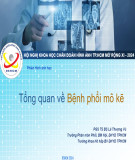
647
GDT = goal directed therapy; ICU = intensive care unit; PA = pulmonary artery; ScvO2= central venous saturation.
Available online http://ccforum.com/content/9/6/647
Abstract
Intensive monitoring and aggressive management of perioperative
haemodynamics (goal directed therapy) have repeatedly been
reported to reduce the significant morbidity and mortality
associated with high risk surgery. It may not matter what particular
monitor is used to assess cardiac output but it is essential to
ensure adequate oxygen delivery. If this management cannot begin
preoperatively, it is still worth beginning goal directed therapy in
the immediate postoperative period.
Haemodynamic monitoring and manipulation are cornerstones
of critical care management. In this issue of Critical Care,
Pearse et al. report two interesting related studies in this area,
examining the effectiveness of postoperative goal directed
therapy following major surgery [1] and the use of central
venous saturation (ScvO2) monitoring in these patients [2].
As the authors at St George’s Hospital, London, point out,
despite their own work [3] and that of others [4,5]
demonstrating the benefit of preoperative goal directed therapy
(GDT) for high risk surgery patients, GDT has not become
routine practice. One can speculate why this might be. A lack
of intensive care beds to allow preoperative admission may be
responsible for not instituting GDT; however, a study from
York, UK, found that preoperative GDT did not increase overall
intensive care use [5]. GDT is a bundle of care that includes
intensive care unit (ICU) monitoring, fluids, blood transfusion
and inotropes, and it is difficult to know if the benefits of GDT
are due to all or just some of these components. Of note for
practitioners, the safety of the pulmonary artery (PA) catheter
has been questioned [6] and this was a core technology to
measure cardiac output in earlier GDT studies.
Pearse and colleagues have taken the pragmatic view that if
the intensive care community will not take up preoperative
GDT, then perhaps postoperative GDT is more palatable, and
so they studied the efficacy of the latter. They demonstrated
that even when only applied postoperatively for the first eight
hours, GDT (as defined by their protocol) significantly
reduced complication rates and hospital length of stay [1].
The two groups received similar volumes of crystalloid and
blood but the GDT group received on average an extra 700
ml of colloid and, as dictated by the protocol, more patients in
the GDT group achieved the oxygen delivery goal of
600 ml min–1 m–2. Mortality rates were similar in both groups.
This was a well conducted randomised controlled study that
importantly had an appropriately managed control group. It is,
however, subject to some limitations. Although it is difficult to
blind GDT interventions, attempts were made to blind
treatment allocation from the clinical team. Fluid management
could have been subject to intentional or unintentional bias,
however, because decisions about fluid treatment were made
by the unblinded research team. Although there were
predefined protocols for fluid administration, these protocols
did include subjective criteria: “clinical suspicion of persistent
hypovolaemia”. This potential source of bias could be
important because the treatment group has consistently
received more fluid in prior studies and this may well be the
major contributor to success of GDT.
The significant reduction of complications and hospital stay
should be sufficient to convince most clinicians, patients and
hospital administrators of the benefits of GDT. The study was
powered to detect a reduction in complication rates from
50% to 34%. This goal was met at the first interim analysis
and so the study was appropriately terminated with only 122
patients recruited. It is, therefore, difficult to interpret mortality
data in such an under-powered sample size. The
interpretation of mortality rates is also confounded by the
Commentary
Goal directed therapy: how long can we wait?
Anthony C Gordon1and James A Russell2
1Clinical/Research Fellow, Critical Care Research Laboratories, Centre for Cardiovascular and Pulmonary Research, University of British Columbia,
Vancouver, BC, Canada
2Professor of Medicine, Critical Care Research Laboratories, Centre for Cardiovascular and Pulmonary Research, University of British Columbia,
Vancouver, BC, Canada
Corresponding author: James A Russell, jrussell@mrl.ubc.ca
Published online: 23 November 2005 Critical Care 2005, 9:647-648 (DOI 10.1186/cc3951)
This article is online at http://ccforum.com/content/9/6/647
© 2005 BioMed Central Ltd
See related research by Pearse et al. in this issue [http://ccforum.com/content/9/6/R687 and http://ccforum.com/content/9/6/R694]

648
Critical Care December 2005 Vol 9 No 6 Gordon and Russell
higher predicted mortality from the P-POSSUM score in the
GDT group than the control group.
As the use of PA catheters has decreased in clinical practice
[7], it is important to assess whether alternative indicators of
inadequate cardiac output are good markers in GDT. In the
first paper [1], cardiac output was not determined using PA
catheters but by lithium indicator dilution and pulse contour
analysis. The second paper by Pearse et al. [2] pursues the
issue of alternative indicators of an adequate oxygen delivery
further. They report that a low ScvO2 was associated with an
increased complication rate [2]. Further studies are required
to determine whether ScvO2can be used as an alternative
to the PA catheter to direct GDT in high risk surgical
patients.
A couple of other findings in this second study are worth
noting. The authors found that ScvO2and cardiac index were
both independently associated with complication rates but
that GDT was not. As they point out, this suggests that
ensuring an adequate oxygen delivery is achieved is more
important than the specific protocol of GDT. It is another
explanation for the clinical equipoise about the use of GDT in
high risk surgical patients.
Pearse and colleagues [2] also found that ScvO2levels
dropped quite markedly in the first hour postoperatively
without changes in other parameters such as blood pressure,
heart rate, base deficit or lactate measurement. This finding
and the correlation of ScvO2 with complications illustrate
why it may be important that these high risk patients receive
GDT for some time before transfer to the general ward. This
has important resource implications, especially in the UK
where this study was conducted, as historically there has
been a relative lack of both intensive care and high
dependency beds [8,9].
Taken together, these two studies [1,2] and previous studies
of preoperative optimization [3-5] show that it is possible to
reduce the high morbidity and mortality of high risk surgery
[10]. It may not matter what particular blood flow monitoring
method is used [1,4,11] as long as an adequate oxygen
delivery is achieved. It makes sense that this aggressive
resuscitation with fluid and inotropes, if necessary, occurs as
soon as possible in the operating theatre [11], if not pre-
operatively, and that it should continue into the postoperative
period. Even if it has not occurred pre- or intra-operatively,
however, these and other studies suggest that GDT is still
worth starting immediately postoperatively [1,2,12,13].
Premature transfer of patients to general wards misses the
GDT opportunity and may be harmful based on studies
showing that patients who require ICU admission from the
general ward postoperatively have a very poor prognosis
[14]. Studies in sepsis of goal directed therapy show
substantial efficacy when started early [15] but not once
organ failure is established [16].
Competing interests
The author(s) declare that they have no competing interests.
Acknowledgements
ACG is a recipient of the UK Intensive Care Society Visiting Fellow-
ship.
References
1. Pearse R, Dawson D, Fawcett J, Rhodes A, Grounds M, Bennett
D: Early goal-directed therapy after major surgery reduces
complications and duration of hospital stay. A randomised,
controlled trial [ISRCTN38797445]. Crit Care 9:R687-R693.
2. Pearse R, Dawson D, Fawcett J, Rhodes A, Grounds M, Bennett
D: Changes in central venous saturation following major
surgery, and association with outcome. Crit Care 9:R694-
R699.
3. Boyd O, Grounds RM, Bennett ED: A randomized clinical trial of
the effect of deliberate perioperative increase of oxygen
delivery on mortality in high-risk surgical patients. J Am Med
Assoc 1993, 270:2699-2707.
4. Shoemaker W, Appel P, Kram H, Waxman K, Lee T: Prospective
trial of supranormal values of survivors as therapeutic goals
in high-risk surgical patients. Chest 1988, 94:1176-1186.
5. Wilson J, Woods I, Fawcett J, Whall R, Dibb W, Morris C,
McManus E: Reducing the risk of major elective surgery: ran-
domised controlled trial of preoperative optimisation of
oxygen delivery. Br Med J 1999, 318:1099-1103.
6. Connors AF Jr, Speroff T, Dawson NV, Thomas C, Harrell FE Jr,
Wagner D, Desbiens N, Goldman L, Wu AW, Califf RM, et al.:
The effectiveness of right heart catheterization in the initial
care of critically ill patients. J Am Med Assoc 1996, 276:889-
897.
7. Carnendran L, Abboud R, Sleeper LA, Gurunathan R, Webb JG,
Menon V, Dzavik V, Cocke T, Hochman JS, for the SHOCK Inves-
tigators: Trends in cardiogenic shock: report from the SHOCK
study. Eur Heart J 2001, 22:472-478.
8. Audit Commission: Critical to Success: the Place of Efficient and
Effective Critical Care Services Within the Acute Hospital.
London: Audit Commission; 1999.
9. National Confidential Enquiry into Perioperative Deaths: Then and
Now: The 2000 Report of the National Confidential Enquiry into
Perioperative Deaths. London: NCEPOD; 2000.
10. Bennett-Guerrero E, Hyam JA, Shaefi S, Prytherch DR, Sutton GL,
Weaver PC, Mythen MG, Grocott MP, Parides MK: Comparison
of P-POSSUM risk-adjusted mortality rates after surgery
between patients in the USA and the UK. Br J Surg 2003, 90:
1593-1598.
11. Sinclair S, James S, Singer M: Intraoperative intravascular
volume optimisation and length of hospital stay after repair of
proximal femoral fracture: randomised controlled trial. Br Med
J 1997, 315:909-912.
12. Polonen PMD, Ruokonen EMDP, Hippelainen MMDP, Poyhonen
MMDP, Takala JMDP: A prospective, randomized study of goal-
oriented hemodynamic therapy in cardiac surgical patients.
Anesth Analg 2000, 90:1052-1059.
13. McKendry M, McGloin H, Saberi D, Caudwell L, Brady AR, Singer
M: Randomised controlled trial assessing the impact of a
nurse delivered, flow monitored protocol for optimisation of
circulatory status after cardiac surgery. Br Med J 2004, 329:
258-261.
14. Lang M, Niskanen M, Miettinen P, Alhava E, Takala J: Outcome
and resource utilization in gastroenterological surgery. Br J
Surg 2001, 88:1006-1014.
15. Rivers E, Nguyen B, Havstad S, Ressler J, Muzzin A, Knoblich B,
Peterson E, Tomlanovich M, the Early Goal-Directed Therapy Col-
laborative Group: Early goal-directed therapy in the treatment
of severe sepsis and septic shock. N Engl J Med 2001, 345:
1368-1377.
16. Hayes MA, Timmins AC, Yau E, Palazzo M, Hinds CJ, Watson D:
Elevation of systemic oxygen delivery in the treatment of criti-
cally Ill patients. N Engl J Med 1994, 330:1717-1722.




![PET/CT trong ung thư phổi: Báo cáo [Năm]](https://cdn.tailieu.vn/images/document/thumbnail/2024/20240705/sanhobien01/135x160/8121720150427.jpg)










![Báo cáo seminar chuyên ngành Công nghệ hóa học và thực phẩm [Mới nhất]](https://cdn.tailieu.vn/images/document/thumbnail/2025/20250711/hienkelvinzoi@gmail.com/135x160/47051752458701.jpg)










